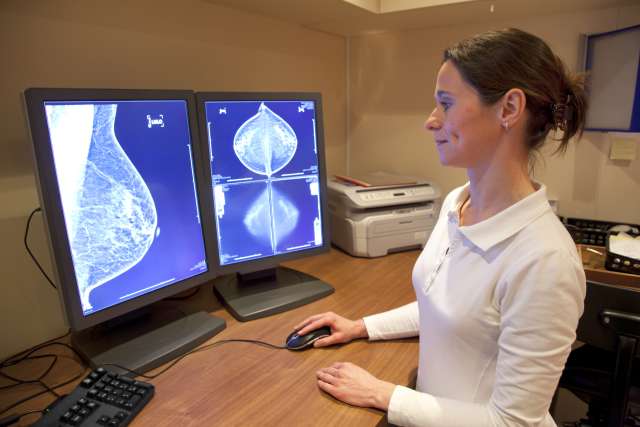One out of every two men and one out of every three women will develop some form of cancer in their lifetime. But research shows that almost half of all cancer cases and cancer deaths are preventable. The key is recognizing the risk factors for cancer that are within your control.
It’s true that some cancer risk factors cannot be changed, such as your age, gender and genetics. But modifiable (adjustable) risk factors depend upon the choices you make every day, namely what you eat and drink, and how you behave.
To affect your risk of cancer in a big way, make these small but important changes to your lifestyle:
Stop smoking and avoid secondhand smoke
Smoking cigarettes, using tobacco products and regular exposure to tobacco smoke all increase your risk for many types of cancer, not just lung cancer. Experts link cigarette smoking to more than 80% of lung cancer deaths. But it accounts for 19% of all cancer cases and approximately 29% of all cancer deaths. While tobacco smoke isn’t typically inhaled, it has a higher level of cancer-causing substances. When you breathe in secondhand smoke from cigarettes, pipes or cigars, you inhale many of the cancer-causing chemicals found in those products.
Action steps:
Work with your primary care provider to get the resources and support you need to . If you are a non-smoker, don’t allow smoking in your home and avoid indoor spaces where people are smoking.
Protect your skin
Exposure to sunlight and ultraviolet (UV) radiation ages and damages your skin. But it also increases your risk of cancer, especially skin cancer – the most common and preventable type of cancer. Exposure to UV radiation causes more than 90% of all skin melanomas, the most serious form of skin cancer. It’s also responsible for almost 5% of overall cancer cases.
Action steps:
Learn more about skin cancer prevention, and make sure to all year long.
Eat a healthy diet
Eating certain foods and avoiding others may help reduce your cancer risk. According to the American Institute for Cancer Research (AICR), the best way to lower your risk of cancer is to consume a variety of plant-based foods. Avoid or limit the amount of processed meat, red meat and sugar-sweetened drinks you consume.
Action steps:
Evaluate the foods you eat regularly. Consider or .
Limit alcohol intake
The amount of alcohol you drink plays a big role in your risk of cancer. Experts link alcohol consumption to more than 5% of overall cancer cases. All types of alcoholic drinks are linked with cancer, and your risk of developing cancer increases with the amount of alcohol you drink.
Action steps:
Evaluate . Limit how much you drink to the amount recommended by the : no more than one drink a day for women and two drinks a day for men. One alcoholic drink equals 12 ounces of beer, 1.5 ounces (one shot) of hard alcohol or 5 ounces of wine.
Maintain healthy weight and be physically active
According to the American Cancer Society, excess body weight causes almost 8% of all cancer cases and more than 6% of all cancer deaths. Both a healthy diet and exercise are important in sustaining a healthy weight. Physical activity also reduces the risk of cancer by reducing inflammation, improving digestion and improving immune system function.
Action steps:
Talk to your primary care provider about reaching and maintaining a healthy weight. Make sure you are getting the amount of physical activity recommended by the U.S. Department of Health and Human Services:
- Aerobic activity, engaging in 150 to 300 minutes of moderate-intensity exercise or 75 to 100 minutes of vigorous activity each week
- Balance training, in addition to aerobic and muscle-strengthening activity
- Strength training, at least two days a week
Get recommended immunizations
Experts have identified several infections that may contribute to cancer, including hepatitis viruses and human papillomavirus (HPV). Hepatitis viruses cause one-third of the liver cancers diagnosed in the United States. HPV infection is responsible for all cervical cancers and more than 50% of anal, vaginal and penis cancers.
The good news is that you may be able to avoid these infections through immunization and smart choices.
Action steps:
Talk to your primary care provider about vaccine recommendations and get immunized when appropriate. Since these infections can be passed through blood and other body fluids, you can also lower your risk of infection by choosing not to have unprotected sex, share needles or engage in other risky behaviors.
Know your family health history and get recommended cancer screenings
Since genetics play a role in cancer risk, it’s important to learn about your . Use that information, along with your physician’s recommendations, to get appropriate . Some screenings can detect cancer early or identify precancerous conditions.
Action steps:
Collect information about your parents, siblings, grandparents, aunts and uncles. The information you gather should include:
- Age at death
- Age at disease diagnosis
- Causes of death
- Ethnic background
- Major medical conditions
Reach out to your primary care physician, who can assess your risk for cancer and help you make healthy lifestyle changes.



